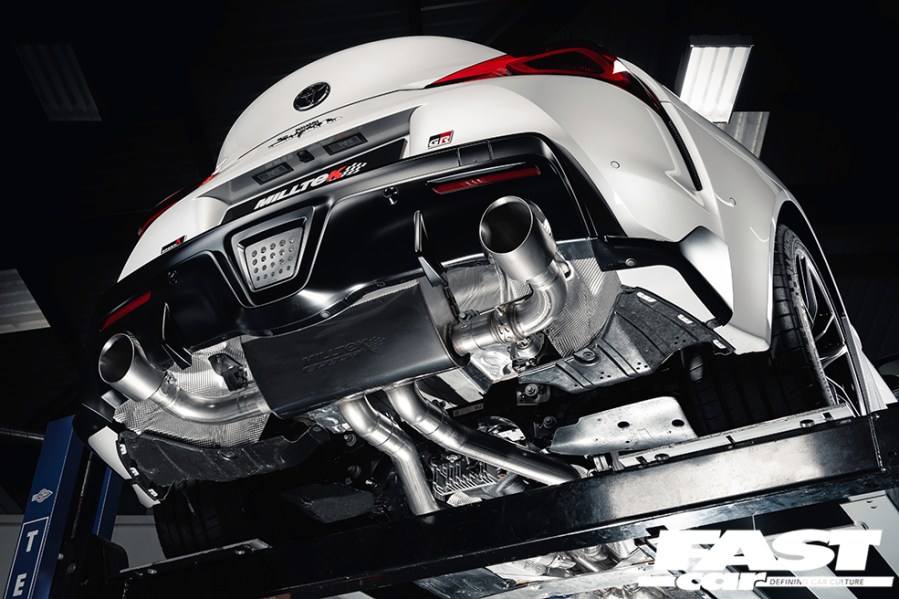The term ‘fast road’ can be a little bit deceiving, but in this case, it’s not so much about sheer speed, it’s more about having speed, along with plenty of other driving enhancements, as and when you need it. Here’s your guide to fast road modifications.
Look at it like this, we’d never suggest that you do 60mph past a school with your mate hanging his arse out of the window. That would make you a dickhead and possibly a sex offender. But, there’s nothing illegal about a blast on a windy 60mph B-road – or getting to 60mph bloody quickly for that matter.
What we’re saying is that it’s okay to enjoy your car on the road, and a good fast-road set-up is simply a combination of acceleration, handling and having all that speed available, rather than actually using it in all the wrong places. After all, some of the world’s best engineered exotica has ridiculous potential for speed, but that doesn’t mean that you need all of it on the way to buy a pint of milk at Lidl, right?
Fast road means so much more than flat out; it’s just about improving on what you’ve got. So, here are our essential fast road mods for more smiles per mile, no matter what you drive…
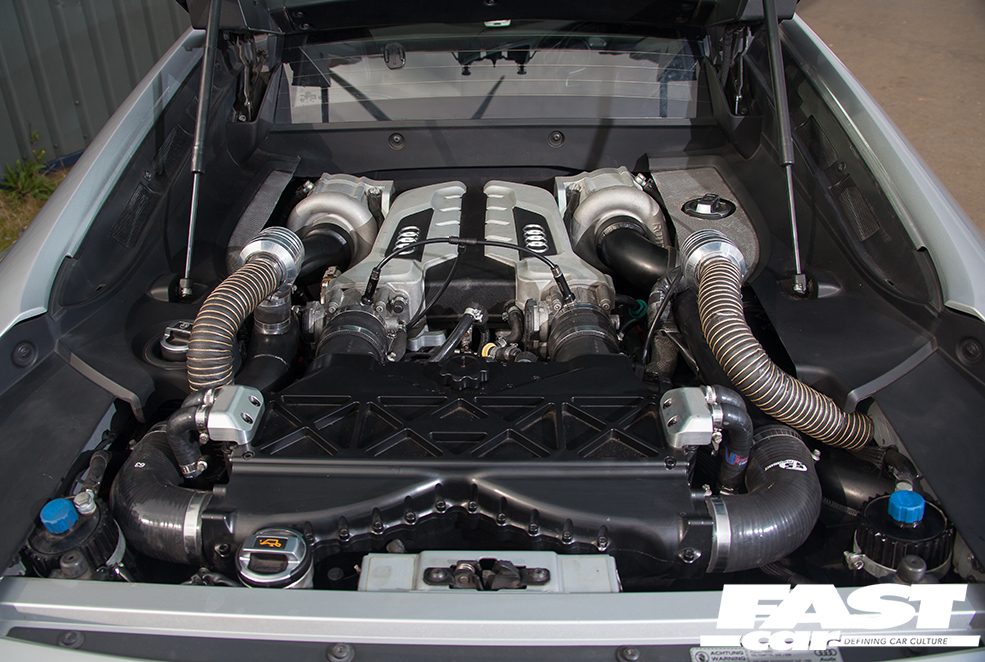
Superchargers
When It comes to getting more power out of a naturally-aspirated vehicle, the most effective method is by forced induction, in the form of a turbo or supercharger. While a turbo is powered by spent exhaust gasses, a supercharger is mechanical and uses a crank-driven belt to create its boost.
There are two basic types of supercharger: positive displacement – the roots, twin-screw and g-ladder setups that are mounted on top of large capacity engines; and centrifugal units, which resemble and work on the same principal as a turbo. These are by far the most popular option for aftermarket tuners as they are a highly efficient and cost-effective way to increase power on engines of any size.
TTS Performance is the UK distributor for Rotrex, the market leader in centrifugal superchargers. They produce their own British-engineered packages for a range of cars and bikes, as well as stocking the full range of Rotrex supercharger products.
A centrifugal supercharger delivers increased pressure with an increase in engine speed. It accelerates the inlet air by giving it a very high speed from the compressor wheel – known as an impeller. This speed energy is then exchanged to pressure when the air is slowed in the diffuser inside the compressor housing.
Compared with a positive displacement supercharger (think big blowers on V8 muscle cars), a centrifugal unit requires far less power to drive, so less bhp is lost running it from the crank. It also delivers power throughout the rev range, and doesn’t run out of puff at around 3000rpm like the big guys. Due to its compact size, a centrifugal ‘charger is much easier to package, which means it can be used on a wider variety of engines – even little 1.0-litre units.
TTS Performance produce Rotrex supercharger packages for some of the most popular cars to tune, including the Honda Civic Type R (EP/FN), Honda S2000 and Toyota GT86/Subaru BRZ, as well as some higher end stuff such as the Ariel Atom, Lotus Elise/Exige, Audi RS4 (B7), Audi S5 (B8) and Audi 8 4.2 V8. Power gains can be huge, with the Honda kits making up to 500bhp, the Audi RS4 kits making over 600bhp, and the twin-supercharged R8 delivering 700+bhp. However, more modest packages are also available for vehicles such as the Suzuki Swift, Peugeot 107, Toyota Yaris and Citroen C1.
Top Contact: TTS Performance – www.tts-performance.co.uk
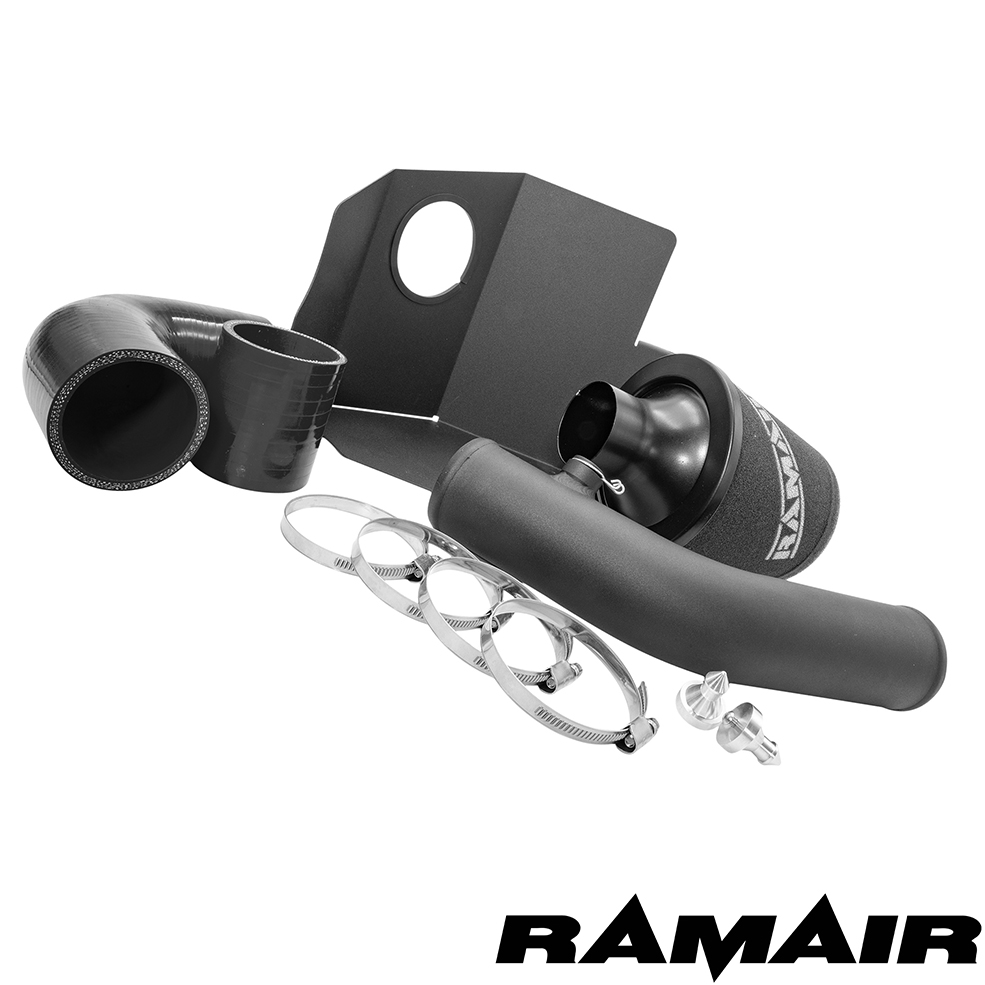
Performance Air Filters
All power tuning works on one main principle; getting more grunt by shoving more oxygen and fuel into the engine to create a bigger, and hence more powerful bang in the cylinders. One simply doesn’t work without the other: you can squirt in as much of Esso’s finest as you like, but it won’t do much for power unless there’s the right amount of oxygen present to burn it all. So, that’s where a performance filter comes in.
Standard filters are disposable items made of paper, making them cheap and great for filtration. Unfortunately, they’re not so good for airflow. A good quality performance filter will be effective at filtering out the minute particles you don’t want in your engine, but they will have the capacity to flow far more air, too. You can then shove in more fuel to match (either automatically, via the AFM and ECU software on a fuel-injected engine, or by fitting bigger jets on an old-skool carb-fed lump), and you’ll get more grunt. You don’t throw these filters away come service time either; they’re all washable and reusable, so they kind of pay for themselves.
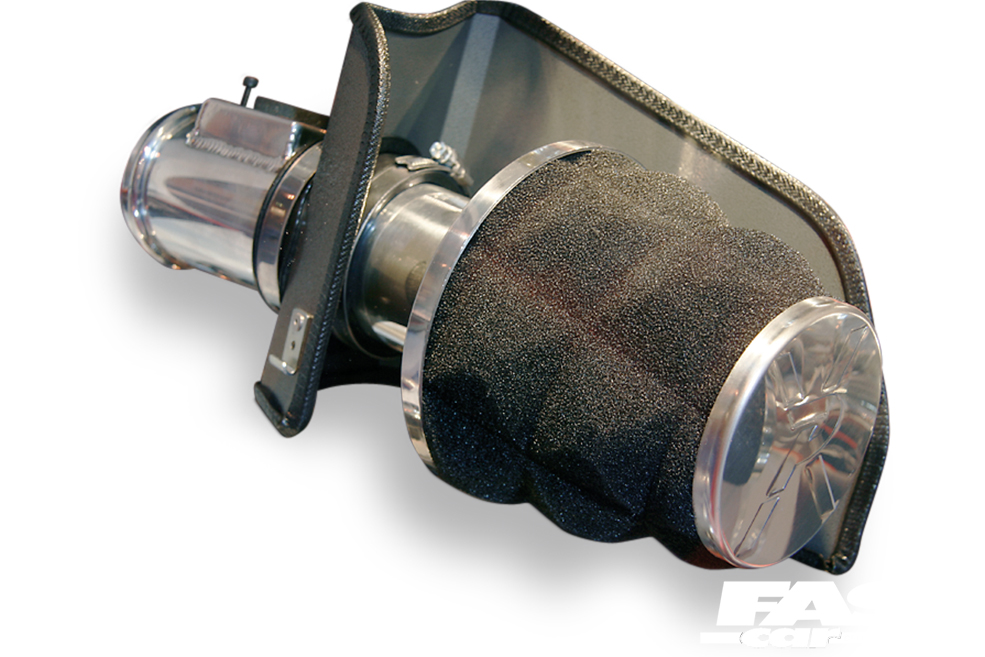
As for the age-old debate of a performance panel filter vs induction kit? Well, that not only depends on the level of future tuning you’ll be wanting to achieve, but on how much fast-road driving you’re going to do. Induction kits and cone filters are more susceptible to sucking in hot air if you spend a lot of time in traffic. More heat means less oxygen for any given volume of air, which doesn’t burn as well. This is why, ideally, they need to be shielded. When you get to serious levels of tune, however, the airflow advantages will far outweigh the heat problems when you have the hammer down.
Performance Panel filters, on the other hand, are already shielded in the standard airbox, but this means that they’ll always be restricted to some degree. They do offer excellent air flow for mildly-tuned road cars, though, and are always a top entry-level mod.
Top Contacts: K&N – www.knfilters.co.uk / RamAir – www.ramair-filters.co.uk
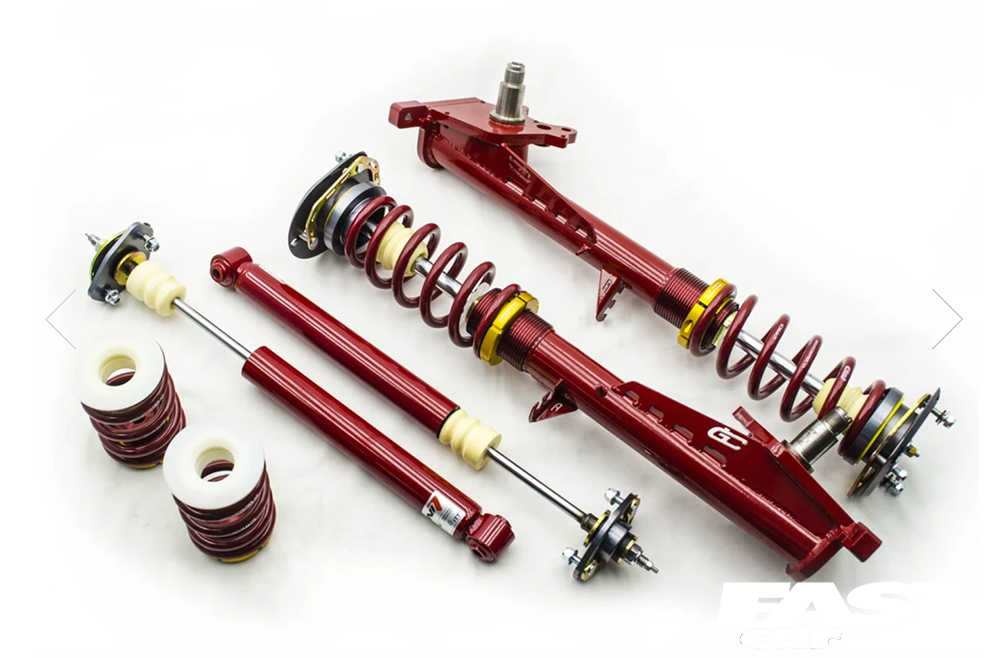
Chassis Gear
Yes, a set of coilovers will be able to dump your car right into the weeds. But it doesn’t take a genius to realise that for fast-road performance, there’s so much more to a supreme chassis set-up. For a start, technically speaking, all the other chassis components, things like wishbones and control arms, can be just as important as the springs and dampers.
The components you choose are all about two things: setting up a useable overall geometry, and reacting/adapting to road conditions while accelerating, slowing
or cornering.
Now, you’ll already know that, as well as setting the ride height, suspension is designed to adapt to bumps in the road. Through the use of bump and rebound parameters, a damper is able to control the compression and extension of the spring that’s holding up the car (be that a coil, spring, air spring or torsion spring). In this way, you get enhanced control over the handling and weight transfer in real-world conditions.
When it comes to geometry, other components are there to set up the right amount of camber, caster and toe for any given situation. In a factory set-up, these settings may not be optimum for fast cornering, or for a drop in ride height, and you may not have the adjustability in the standard components to correct it. This is where enhancements like adjustable arms and top mounts come in.
Bear in mind, though, it’s not about building a killer race car. For fast-road tuning, you have to juggle all these parameters to make the car useable in the real world. Compliance is everything.
Top Contact: Ground Control – www.groundcontrolstore.com
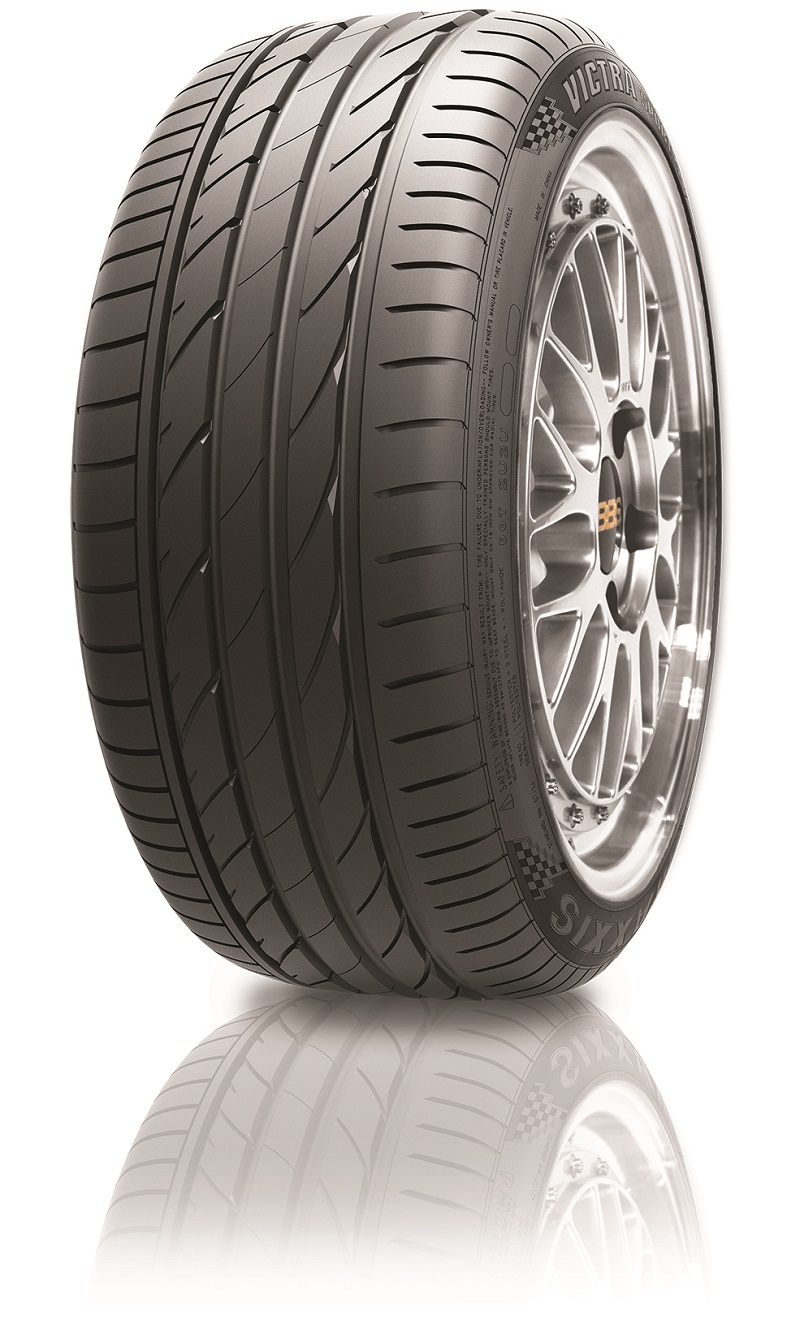
Performance Tyres
This is probably the 4768th time I’ve written this sentence over the years but it still rings true – the relatively small contact patches on your tyres are the only part of your car to actually connect it to the tarmac. It is therefore pretty important to consider your rubber if you don’t want to end up upside down in a ditch on a rainy winter’s night.
Yes, those Kojak Wangulang Nemesis AK-47 remould jobs may look like a bargain, but your pride and joy, and let’s face it your arse, deserves better.
In motorsport getting the right tyres is everything, and it’s no different for the road. But the best resource you’re ever going to have for finding the best brand, model and fitment for your application is the car culture community. And one tyre that is causing quite a stir at the moment is the Maxxis Victra Sport 5 (https://www.maxxis.co.uk/catalog/tyre-52-1-victra-sport-5-vs5). In testing this high-performance summer tyre has rivalled class leaders from the likes of Pirelli and Michelin but is a damn sight more affordable! Most of all, never underestimate the impact that a decent set of tyres can make to performance, handling and safety. Buy with your head first, and your wallet second.
Top Contact: Maxxis – www.maxxis.co.uk
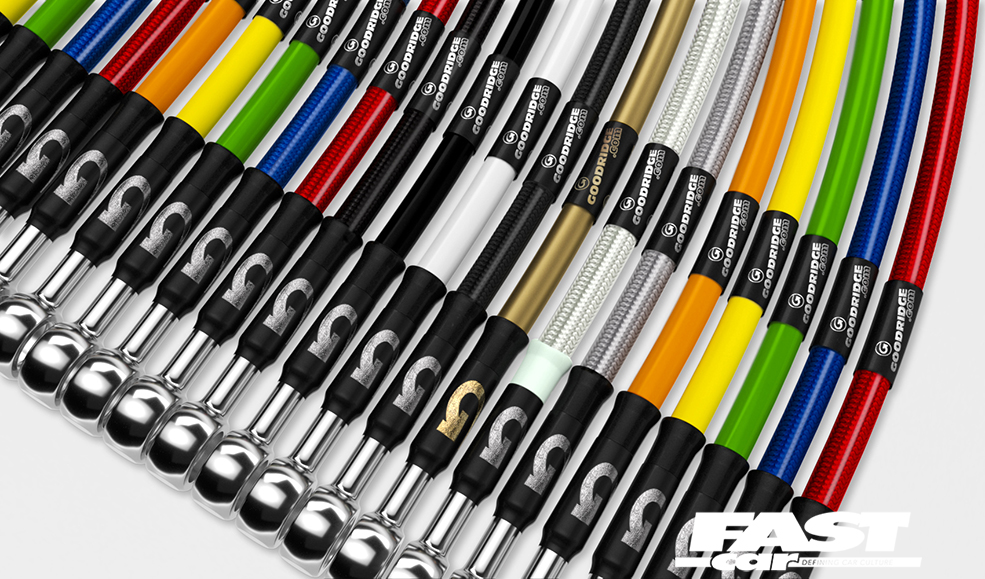
Brake Lines
We all know that having better brakes makes your car real-world quicker. The faster you can get off the middle pedal and back on the loud one, the more rapido your car will be. Fact.
Improving your brakes comes down to more than having effective discs and pads; eliminating weakness in the fluid transfer system is another way to make a huge difference to braking performance and feel.
All vehicles have solid metal ‘hardlines’ taking the brake fluid from the master cylinder to the arches. From here, you’ll usually have flexible rubber pipes transferring the fluid to the calipers, and this is where you can make your improvements. Standard rubber pipes tend to flex and bulge under heavy braking and they’re not the most hardwearing when it comes to bumps and scrapes either.
Replacing the standard OEM rubber brake hoses with a direct replacement Goodridge Premium Performance Brake Line Kit is the most cost effective upgrade that can be made to any vehicle braking system. The braided lines eliminate any expansion under arduous braking; increasing efficiency, inspiring confidence and maximising control.
Top Contact: Goodridge – www.goodridge.co.uk

Software Remaps
From the factory the vast majority of cars are detuned and this is for one simple reason. Any motor you buy will be designed to last for hundreds of thousands of miles in the most extreme conditions possible. Manufacturers have to take into consideration that their cars have to not only work but remain reliable all around the world, from -40 °C snowstorms in Finland to 45°C desert conditions in the Middle East. They also have to account for the availability of decent quality fuel.
And that’s the biggest point: we have good quality fuel here, and the temperatures aren’t in any way extreme enough to affect your car. That means you can use software to make the most of these conditions and any supporting mods you’ve fitted, all the while keeping the engine within safe parameters.
Everything from simple off-the-shelf port maps to full-on custom and live maps on a rolling road are designed to electronically tweak engine settings like boost, fuel delivery and engine timing, to increase power, or mpg, or drivability, or all of the above.
Top Contact: Revo – www.onlyrevo.com
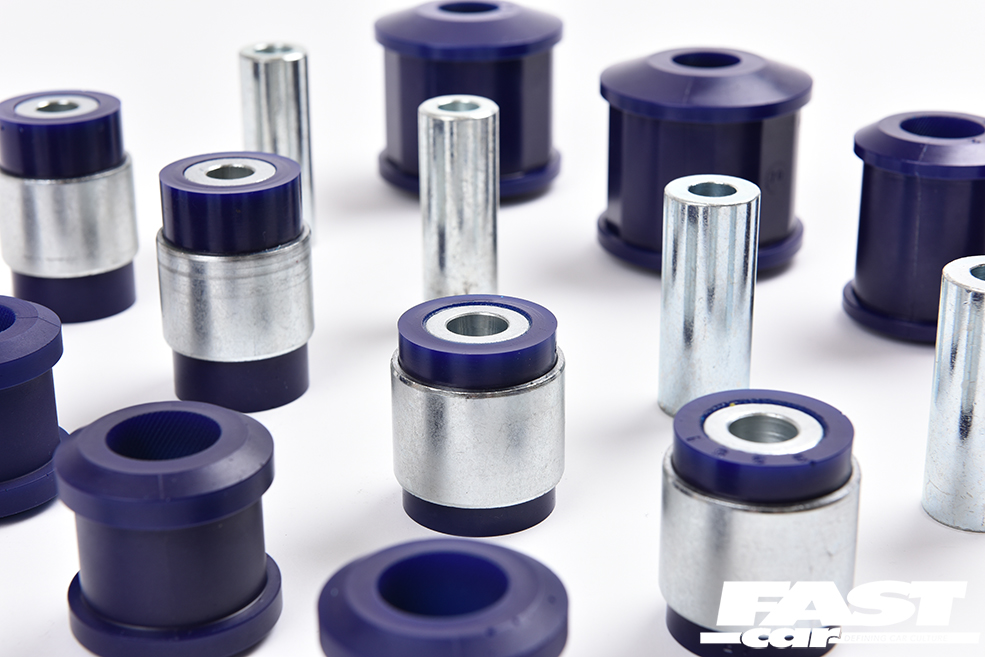
PU Bushes
Okay, so polyurethane bushes could be seen as part of the ‘Chassis Gear’ category, but what puts them in a league of their own is that, rather than dialling in that perfect geometry, they have more to do with keeping it that way over a long period of time. They also stiffen the chassis to keep these settings at optimum when you’re pushing your suspension to the limit.
Standard bushes are simply there as vibration isolators designed to dampen the energy transmitted through the join in two key components: this provides shock-resistance to your backside and improves NVH (Noise Vibration Harshness).
Any sort of fruity fast-road driving doesn’t help matters, but the biggest killer of rubber bushes is time – they degrade, sag and, most importantly, change those alignment settings that you’ve worked so hard to achieve. Add that to the fact that they mostly sit on the comfort side of the fence to begin with, and it doesn’t do much for handling performance.
PU bushes use a synthetic polymer so they don’t degrade like rubber and will generally last 10 times longer. In real-world terms that’s beyond the life of the vehicle, and properly engineered items from the bigger manufacturers don’t make the car uncomfortable. They are a little more expensive than standard but you
can’t lose.
Top Contact: SuperPro – www.superproeurope.com
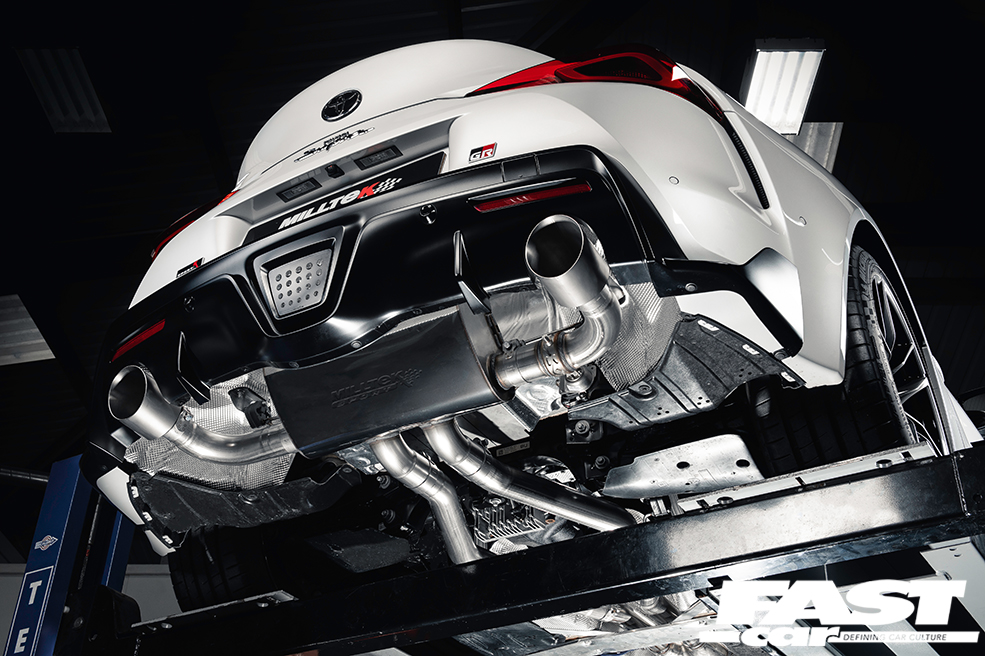
Performance Exhausts
Getting the maximum airflow into an engine is one thing, but it’s just as crucial to get the gases out as efficiently as possible after combustion. This is exactly where an effective performance exhaust will bag you more horsepower.
Basically speaking, out-and-out race exhausts are built to eliminate as much of the flow restrictions as possible, and this comes down to two considerations – design and pipe bore. A good fast-road exhaust simply offers a compromise between the extra power and practicality – considering all the helpful stuff like not making you go deaf or getting you nicked.
In an ideal performance world, most exhausts would be straight, short and restriction free. But that’s not possible on road cars without making them impractical. So, a performance exhaust manufacturer will usually follow the design of the original closely but will smooth out bends as much as possible. They’ll also take out much of the restriction caused by multiple silencers, unnecessary pipework and baffles. These will be sound-tuned so they’re not unbearable – in most cases not that much louder than standard – but, importantly, they will up the grunt.
Increasing bore is another way of increasing gas flow, but it’s a bit more complicated than making your pipe as big as possible. Well-designed performance exhausts will offer a larger diameter but only when it’s needed. On a N/A engine the scavenging effect is needed to help pull through the gases faster. In a turbocharged engine, the scavenging isn’t needed so a bigger pipe is more advantageous. Supercharged engines are somewhere in between. So there you go.
Top Contact: Milltek – www.millteksport.com
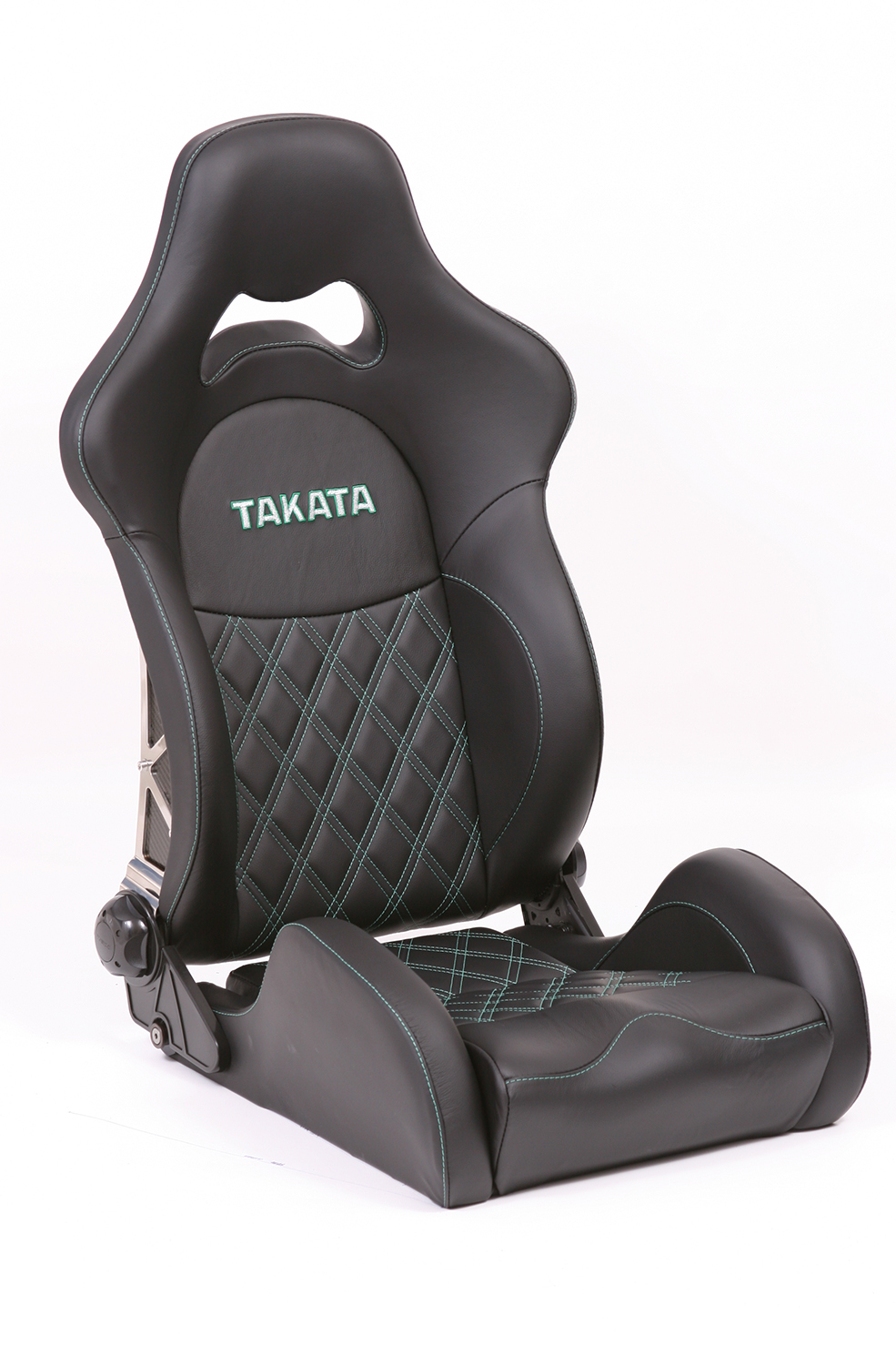
Seats
Racing cars have fixed bucket seats for two main reasons – to save weight and to hold your arse in place when you’re taking a corner at speed. The same can be said for sports recliners, which are designed to emulate the support of a bucket seat, but with adjustable backs for a little more comfort and practicality on the road.
So, contra to many an internet expert, a decent set of seats is a genuine handling mod. At a very basic level it’s far easier to concentrate on your driving when you’re not worried about smashing into the door or having the gearstick inserted into you, right?
The weight thing is pretty easy to understand too. The more heft you strip out, the less every single horsepower coming from the engine has to work to get you down the road. Weight saved, then, is practically free power.
Many aftermarket seats push the envelope when it comes to space-age materials, using carbon, Kevlar and aluminium for supreme lightness. But even the most entry level set of perches can save you up to 25kg over standard.
Oh, and don’t forget those harnesses either – having a set of straps pinning you in place not only inspires confidence like nothing else, but they’ll stop you getting a face full of windscreen if you mess up.
Top Contacts: Cobra – www.cobraseats.com / Corbeau – www.corbeau-seats.com / Takata – www.takataracing.com
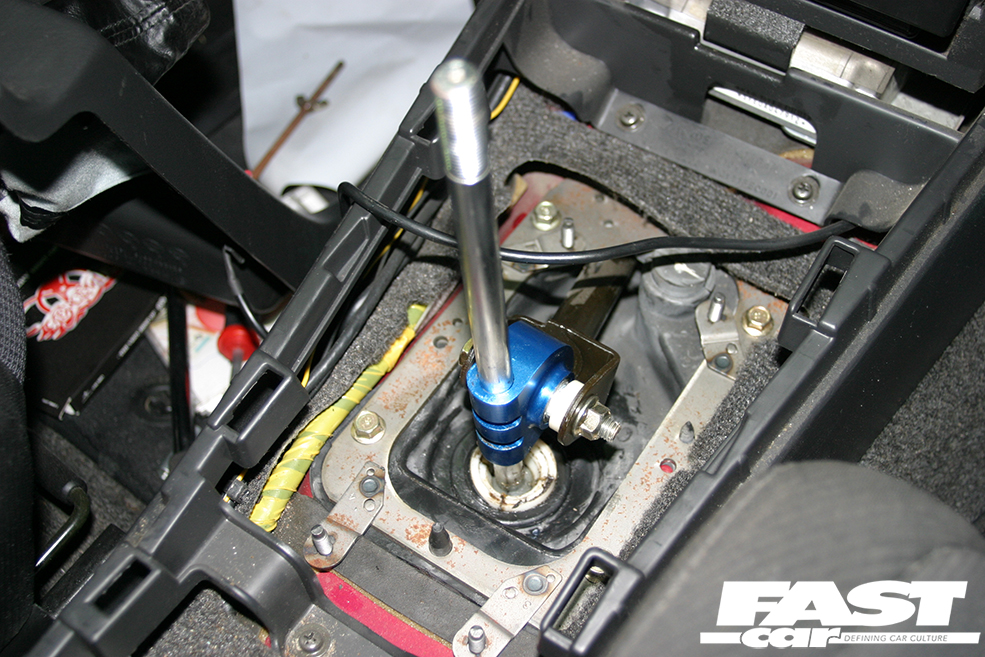
Quick Shifts
A short (or quick) shift kit can make so much more difference than you may think. In fact, I spent a lot of my early modding career thinking ‘yeah right, what a load of bollocks’… but then I actually fitted one and immediately had to eat my Ed Hardy trucker cap (yes, it was a fair few years ago, OK!).
The point is that, for the money, these items arguably enhance the driving experience more in the twisty bits than anything else.
The premise is pretty simple: to stop your gear change from feeling like stirring porridge. They do this by reducing the gear-throw – chiefly the vertical distance the lever has to travel to slot in a gear – by anything up to 70-percent. Many can reduce the throw from side to side, too. Basically, the quicker you shift gears, the quicker you’re back on the gas. And you know what that means. There’s two common types: ‘direct’ kits that replace the entire gearstick, most common on cars with longitudinally-mounted engines (think MX-5, 200SX etc). More often than not these fit directly into the gearbox, just like the standard part. And then there’s the ‘linkage’ kits which mount in between the gearbox and the standard linkage on cars with transversely-mounted engines (VAGs, Fords and the like). Both are easy to fit for anyone that knows one end of a spanner from the other. They’re specialist parts, so you won’t find them for all makes and models. But don’t underestimate the power of a supremely-weighted gear knob either. The extra weight will act as a lever to enhance a fast, positive shift.
Top Contacts: Direnza – www.direnza.co.uk / Japspeed – www.japspeed.co.uk / Forge Motorsport – www.forgemotorsport.co.uk

